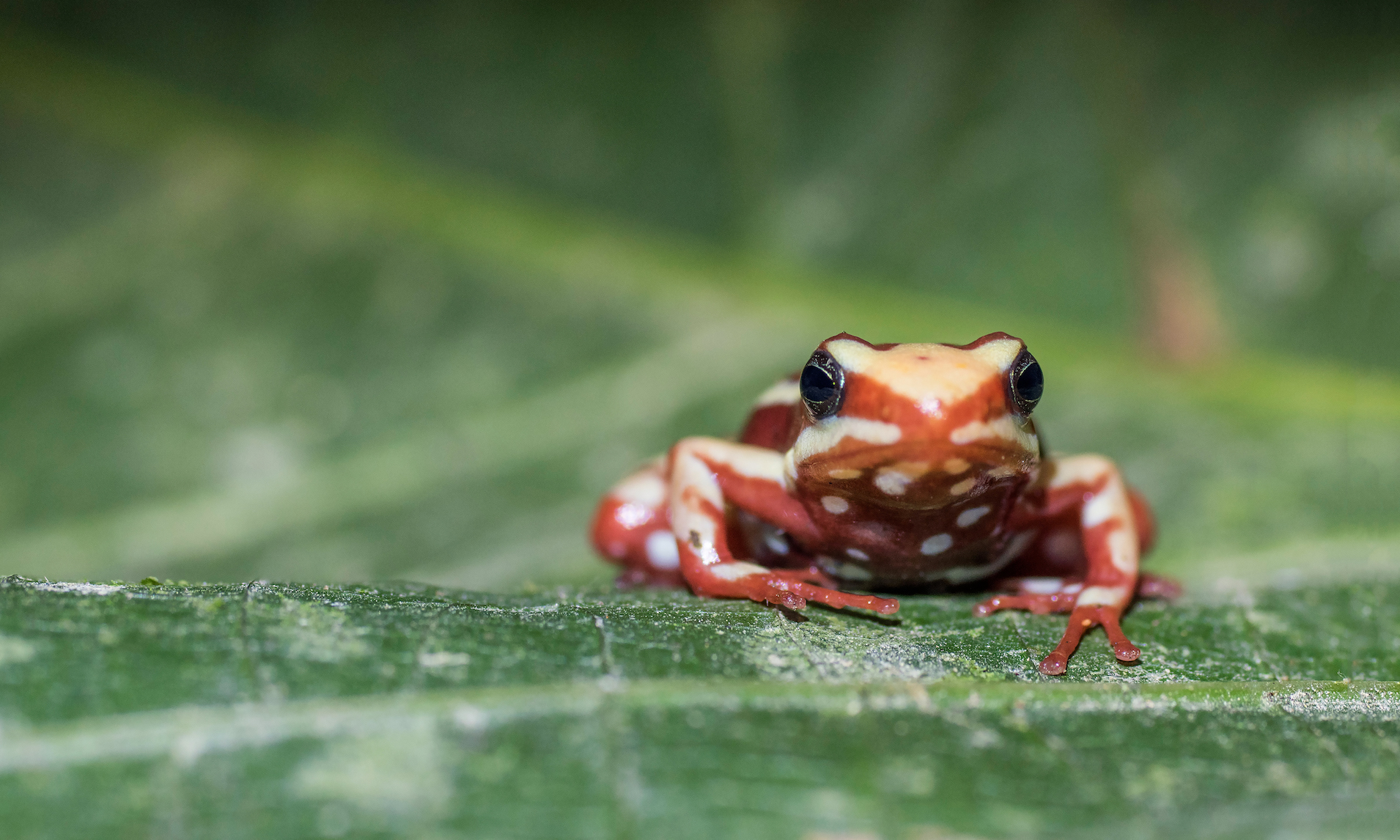
How do poison frogs keep from poisoning themselves?
With a bright assortment of colors and tiny frames, poison frogs hardly look poisonous at all. However, these frogs harbor some of the most potent neurotoxins in existence. So how do poison frogs keep from poisoning themselves? A new study has gotten scientists one step closer to answering this question, and the solution may have a major impact on the fight against pain and addiction.
Researchers at The University of Texas at Austin have managed to solve this mystery for a subgroup of poison frogs that use the toxin epibatidine as a defense against predators. The toxin binds to receptors in the attacker’s nervous system and triggers a dangerous burst of activity that can cause hypertension, seizures, and even death.
The research team found a small genetic mutation in the frogs which makes them resistant by preventing the toxin from acting on the frogs’ own receptors. The detected changes were so slight that they were only present in three of the 2,500 amino acids that make up the receptor. Researchers also discovered that the exact same mutation appeared three separate times in the evolution of these frogs.
“Being toxic can be good for your survival — it gives you an edge over predators,” said co-author Rebecca Tarvin. “So why aren’t more animals toxic? Our work is showing that a big constraint is whether organisms can evolve resistance to their own toxins. We found evolution has hit upon this same exact change in three different groups of frogs, and that, to me, is quite beautiful.”
Of the hundreds of species of poisonous frogs, each species uses different neurotoxins. One of those toxins, epibatidine, is known to be a powerful non-addictive painkiller. Hundreds of compounds have been developed from this toxin, and one compound even made it as far as the human-trial phase of drug development.
This study, which is published in the journal Science, gives scientists new insights about epibatidine that may ultimately help in formulating improved pain medicine and drugs to fight nicotine addiction.
“Every bit of information we can gather on how these receptors are interacting with the drugs gets us a step closer to designing better drugs,” said co-author Cecilia Borghese.
—
By Chrissy Sexton, Earth.com Staff Writer
Photo Credit: Rebecca Tarvin/University of Texas at Austin













